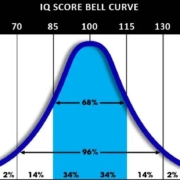Parents of children with disabilities should be very excited about the debut of this new tax-free savings account. This will be a great option for those who are intimidated by Supplemental Needs Trusts (“SNT”); Trusts that are intended to financially help those with disabilities while not endangering their government benefits.
These so-called 529 Able or 529A accounts are similar to the 529 college savings accounts that parents may be familiar with. These accounts stem from Congressional passage of the “Achieving a Better Life Experience Act of 2014,” also known as the ABLE Act.
These accounts will allow those with disabilities to retain their eligibility for such governmental programs as Medicaid and Supplemental Security Income. Generally, individuals become ineligible for these programs when they have more than $2000 in savings and certain assets. The beauty of the Able accounts is that the first $100,000 will not count toward that total. This money can then be used for such things as education, health care, and certain services without affecting their government benefits.
These Able accounts will be offered by the states individually, so there will be differences and it’s difficult to say how long it will take for each state to enact it. In New York, Governor Cuomo has signed the ABLE legislation into law.
Some requirements will be uniform for all state plans. For instance, to qualify for an Able account, the individual must have become disabled by age 26, though this age limit may be adjusted upward in the future. The disabled person, who is the owner of the account, will be able to handle their own finances if they are able to do so. This is a big difference from the SNT. Earnings from the disabled person, or his or her friends and relatives can contribute up to $14,000 per year in total. That is in total, not per contributor. Like a 529 plan, the funds can be invested and the money may be withdrawn tax-free for eligible expenses.
Am important provision to note is that after the beneficiary’s death, states can look to the accounts to recover the cost of the Medicaid coverage while the individual was alive. Certain SNT’s do not have this drawback nor the $100,000 maximum.
Details are still being worked out in New York. Stay tuned. I will be updating this Blog as more information about New York State’s Able accounts emerge.
For more information on Able Accounts as well as Special Needs Planning, please visit:







